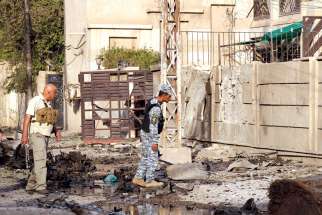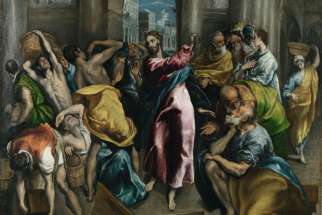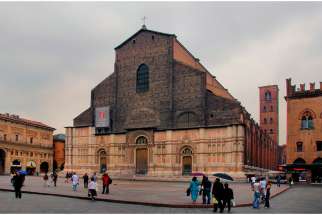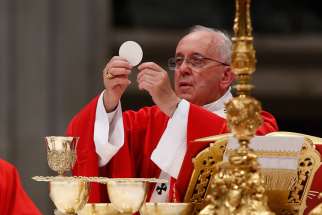TORONTO - For almost 100 years in Toronto, thousands of Sunday worshippers have relied on Sunday only streetcar stops to help get them to church on time.
KATHMANDU, Nepal - When a 7.8-magnitude earthquake roared through this Himalayan nation April 25, leaving an estimated 5,500 dead and more than 11,000 injured, shrines and temples were sent crashing to the ground, many of them centuries old and irreplaceable cultural treasures.
Opening the hearts of the people
John’s account of Jesus’ cleansing of the temple is in sharp contrast to the other Gospel accounts of this dramatic story. In the Synoptic Gospels, this scene takes place at the end of the “Palm Sunday Procession” into the holy city.
War on houses of worship
As I wrote last week from Jerusalem, just months after the massacre at a synagogue in Har Nof, an ultra-Orthodox Jewish neighbourhood, I felt a duty to make a visit, to pray for the dead and to offer, in a small way, solidarity with those who suffered the desecration of their house of worship.
The weak before God will receive the power
Third Sunday of Lent (Year B) March 8 (Exodus 20:1-17; Psalm 19; 1 Corinthians 1:18, 22-25; John 2:13-25)
The Ten Commandments are often viewed as obsolete and out of touch with the modern world. They are unfortunately treated as if they were the 10 suggestions rather than commandments. Even those who use them as weapons in the culture wars of our times are sometimes hard-pressed to name all of them.
Two churches, two sacred places, two struggles
God has given us two churches, one is found everywhere and the other is found at select places. Some of us prefer one of these and struggle with the other, but both are sacred places where God can be found and worshipped.
God’s Spirit dwells in us
Dedication of the Lateran Basilica (Year A) Nov. 9 (Ezekiel 47:1-2, 8-9, 12; Psalm 46; 1 Corinthians 3:9b-11, 16-17; John 2:13-22)
In ancient Israel the temple was a rich metaphor for the life-giving presence of God. For people of the ancient world, temples were theology books in stone. Their mathematical proportions and symbolic structures were meant to reflect divine and cosmological principles. The temple was often referred to as the navel or axis of the world.







